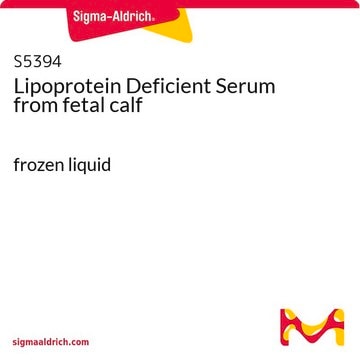MABF2092
Anti-CD44 Antibody, clone Hermes-1
clone Hermes-1, from rat
Sinónimos:
CDw44, Epican, Extracellular matrix receptor III, ECMR-III, GP90, lymphocyte homing/adhesion receptor, HUTCH-I, Heparan sulfate proteoglycan, Hermes antigen, Hyaluronate receptor, Phagocytic glycoprotein 1, PGP-1, Phagocytic glycoprotein I, PGP-I
About This Item
Productos recomendados
biological source
rat
antibody form
purified immunoglobulin
antibody product type
primary antibodies
clone
Hermes-1, monoclonal
species reactivity
human
packaging
antibody small pack of 25 μg
technique(s)
flow cytometry: suitable
immunohistochemistry: suitable (paraffin)
immunoprecipitation (IP): suitable
isotype
IgG2aκ
NCBI accession no.
UniProt accession no.
target post-translational modification
unmodified
Gene Information
human ... CD44(960)
General description
Specificity
Immunogen
Application
Immunoprecipitation Analysis: A representative lot immunoprecipitated CD44 in Immunoprecipitation applications (Jalkanen, S.T., et. al. (1986). Eur J Immunol. 16(10):1195-202; Jalkanen, S., et. al. (1987). J Cell Biol. 105(2):983-90).
Flow Cytometry Analysis: A representative lot detected CD44 in Flow Cytometry applications (Jalkanen, S.T., et. al. (1986). Eur J Immunol. 16(10):1195-202).
Inflammation & Immunology
Quality
Immunohistochemistry Analysis: A 1:50 dilution of this antibody detected CD44 in human skin and human sweat gland tissues.
Target description
Physical form
Storage and Stability
Handling Recommendations: Upon receipt and prior to removing the cap, centrifuge the vial and gently mix the solution. Aliquot into microcentrifuge tubes and store at -20°C. Avoid repeated freeze/thaw cycles, which may damage IgG and affect product performance.
Other Notes
Disclaimer
Not finding the right product?
Try our Herramienta de selección de productos.
Certificados de análisis (COA)
Busque Certificados de análisis (COA) introduciendo el número de lote del producto. Los números de lote se encuentran en la etiqueta del producto después de las palabras «Lot» o «Batch»
¿Ya tiene este producto?
Encuentre la documentación para los productos que ha comprado recientemente en la Biblioteca de documentos.
Nuestro equipo de científicos tiene experiencia en todas las áreas de investigación: Ciencias de la vida, Ciencia de los materiales, Síntesis química, Cromatografía, Analítica y muchas otras.
Póngase en contacto con el Servicio técnico





